Follicular Unit Transplantation (FUT) was first introduced to the medical community by Dr. Robert Bernstein in his 1995 publication “Follicular Transplantation.” Dr. Bernstein presented this paper at the Annual Meeting of the International Society of Hair Restoration Surgeons the following year. However, the procedure initially met with great resistance by hair transplant community and for the next three years, only a handful of physicians were actually using this new technique. That all changed in 1998.
At the 6th Annual 1998 Meeting of the International Society of Hair Restoration Surgeons held in Washington, D.C., Dr. Walter Unger (defending the “old guard”) debated Dr. Bernstein (representing this new technique) in front of an audience of over 450 hair restoration surgeons from around the world. Dr. Unger took the position that large grafts still had a place in surgical hair restoration, particularly for creating density. Dr. Bernstein took the position that the new procedure of Follicular Unit Transplantation could create that density while at the same time achieving a completely natural look – something large graft procedures were incapable of doing. He argued that the versatility and naturalness of Follicular Unit Transplantation rendered the older procedures obsolete.
Follicular Unit Hair Transplantation clearly won the day… and the rest is history. Within three years of this debate, there were hardly any doctors left in the United States still performing large-graft hair transplant techniques. A review of their discourse appeared in Dermatology Times.
Excerpts from the debate with Drs. Unger and Bernstein taken from presentations at the annual meeting of the International Society of Hair Restoration Surgery held in Washington, D.C., 1998.
Is There Still a Place for Standard Grafts in Hair Restoration Surgery?
Position: YES
Dr. Walter Unger
You have to use the hair transplant technique that will give you consistently good results. I can consistently produce very natural-looking results regardless of the type of grafts that I use. I have many patients come back who report that even their hairstylists can’t tell that they have had transplants.
It’s not that I don’t like follicular units or have a thing about big grafts; I know that all of these techniques can yield good results. I object to the “absolute” rules presented by speakers at hair restoration meetings, on the Internet, or in advertisements in order to promote one particular concept.
Of course, you can produce 80 hairs per square centimeter with Follicular Unit Transplantation, and you get good results. However, you shouldn’t remove any of the other graft options, including standard grafts, from your armamentarium.
This is what is wrong with our profession right now: there is too much “irrational exuberance.” If you can find something that works well in your hands, then use it, but do not tell other people that it is the only way they can do things.
There are costs to follicular unit-only hair transplantation that must be recognized. I get less density with follicular units than I can get with a session using several different graft sizes. Given, thin is often appropriate; you don’t want to use up all of your donor hair frontally if you have a limited or poor donor-recipient area ratio. You also don’t want to use it up in a young man.
However, there are some people who can well afford the donor hair and want great density. In these individuals, mixed grafts are the best option in my hands.
Furthermore, there is more tissue handling with follicular unit transplantation during both preparation and insertion of the grafts. A larger number of grafts have to be transplanted, and they have to be densely packed if you want a dense enough result per session, compared with standard grafting.
Follicular unit grafting also risks the loss of hairless follicles. You can lose up to 13% of follicles that are in the resting telogen phase. Even if you can see these hairless follicles, and I’m not sure that you can, technicians are not looking for them when they are slicing up donor tissue into follicular units.
Admittedly, you have to be an extraordinary surgeon to get good results with large grafts at the hairline. However, when I use larger grafts, I use them in a limited area posterior to the hairline zone, which is always created with micrografts and minigrafts anteriorly as well as posteriorly; on either side of the larger grafts; and in areas of existing hair that is likely to be lost with the progression of male pattern baldness.
Position: NO
Dr. Robert M. Bernstein
Finally, after 40 years, standard grafts are on the defensive.
Standard grafts exhibit a callous indifference to human tissue. Standard grafting causes significant damage to the donor area through the larger recipient wounds. They always require a “cover-up” using smaller, more appropriately sized grafts.
Proponents of standard grafting claim that large grafts are needed for density and that large grafts avoid the loss of telogen follicles.
They also lament the psychological toll of long hair transplant sessions using small grafts but ignore the effects of a protracted course of small multiple surgeries.
These hair restoration surgeons attempt to impress you with fancy terms like “maximum density” and dazzle you with hair counts approaching 200 hairs per square centimeter.
But traditional grafts often cause the scalp to feel unnatural and have an unnatural look when wet, when the hair is seen at different angles, or when the hair is not perfectly groomed. Other dangers include decreased perfusion after healing, an unnecessarily large number of procedures, and long-term problems with hair distribution.
All of us can achieve high density, but the final density is determined by the amount of hair moved, rather than the size of the grafts. Density is a somewhat misleading term since a transplanted density that approximates 50% of the original hair density is indistinguishable from one’s original hair.
Regardless, you can achieve as much density as you want with follicular transplantation while maintaining a totally natural look.
Moreover, telogen hairs are not necessarily lost when properly dissected during follicular unit harvesting because they often are part of a follicular unit that has visible hairs.
The risk therefore of any of them being lost is negligible, particularly if the dissection is performed with care.
The future of hair transplantation lies in the ability to preserve the blood supply and minimize scarring in the recipient area.
When standard large grafts are used centrally, multiple hair transplant sessions are required and there is a possibility that the blood supply can be compromised, resulting in poor growth and “doughnuting,” a condition where the hair in the center of large grafts does not survive.
Hair survival in larger grafts is highly exaggerated; doughnuting and other evidence of poor graft survival are evident regardless of technique.
Large grafts are very inefficient, seldom grow at 100%, and require a “screening” population of micrografts and minigrafts to look natural. As a result, they rapidly deplete donor supply.
Regardless, the primary reason for the decline of standard graft use is that even the best of 4-session standard graft cases appear pluggy upon close inspection. The rationale for using standard round grafts has been to achieve maximum density. However, appropriate density can now be achieved with a hair restoration procedure that looks totally natural and avoids the problem of these larger grafts. If doctors had the insight to use small grafts when hair transplantation first began in the 1950’s would we even be discussing the use of the larger standard graft procedures today?
Posted by

 The evolution of “follicular transplantation” can be attributed to three people. Dr. Robert Bernstein coined the phrase and advanced the concept. Dr. Bob Limmer ((Limmer B: Forum, Vol. 2, #2, 1991.)), ((Limmer B: J Dermatol Surg Oncol, 1994; 20:789-793.)) introduced the use of the binocular microscope, providing the technology, and Dr. David Seager showed by direct hair counts, comparing the growth of grafts cut with and without the microscope, how the hair growth was improved when the follicular unit was kept intact. ((4th Annual Meeting of the International Society of Hair Restoration Surgery September 19, 1996, “Does the size of the graft matter?”)), ((Seager, DJ: Micrograft size and subsequent survival — accepted for publication — Journal of Dermatologic Surgery.))
The evolution of “follicular transplantation” can be attributed to three people. Dr. Robert Bernstein coined the phrase and advanced the concept. Dr. Bob Limmer ((Limmer B: Forum, Vol. 2, #2, 1991.)), ((Limmer B: J Dermatol Surg Oncol, 1994; 20:789-793.)) introduced the use of the binocular microscope, providing the technology, and Dr. David Seager showed by direct hair counts, comparing the growth of grafts cut with and without the microscope, how the hair growth was improved when the follicular unit was kept intact. ((4th Annual Meeting of the International Society of Hair Restoration Surgery September 19, 1996, “Does the size of the graft matter?”)), ((Seager, DJ: Micrograft size and subsequent survival — accepted for publication — Journal of Dermatologic Surgery.))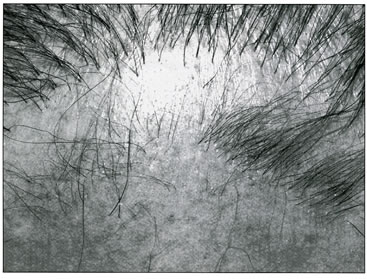
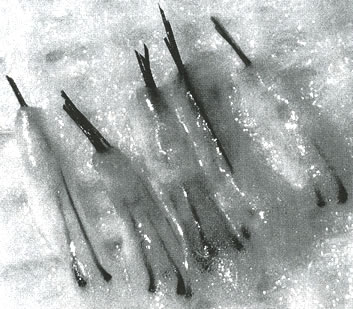
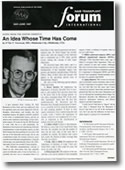 I just returned from visiting Dr. Bob Bernstein in New York, and was impressed with his operation and even more impressed with his thoughts, observations, and insights into hair transplant surgery. He applies scientific methods to his work, is academically honest, and has an almost eerie instinctive knowledge of hair transplant surgery. Of course he has Dr. Bill Rassman to work with, but it is still remarkable. Dr. Bernstein is best known for introducing follicular transplantation ((R. Bernstein and W. Rassman Follicular Transplantation, International Journal of Aesthetic and Restoration Surgery. Vol. 3: No 2,1995, 119-132.)) to hair transplant surgery, an idea Bob Limmer has been pushing for ten years with the use of the binocular microscope, but no one would listen to him. Dr. Limmer, however, never used the term follicular transplantation. Using the microscope, you automatically dissect the follicular units. It can’t be avoided if done properly.
I just returned from visiting Dr. Bob Bernstein in New York, and was impressed with his operation and even more impressed with his thoughts, observations, and insights into hair transplant surgery. He applies scientific methods to his work, is academically honest, and has an almost eerie instinctive knowledge of hair transplant surgery. Of course he has Dr. Bill Rassman to work with, but it is still remarkable. Dr. Bernstein is best known for introducing follicular transplantation ((R. Bernstein and W. Rassman Follicular Transplantation, International Journal of Aesthetic and Restoration Surgery. Vol. 3: No 2,1995, 119-132.)) to hair transplant surgery, an idea Bob Limmer has been pushing for ten years with the use of the binocular microscope, but no one would listen to him. Dr. Limmer, however, never used the term follicular transplantation. Using the microscope, you automatically dissect the follicular units. It can’t be avoided if done properly.
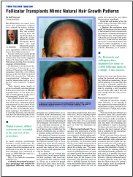
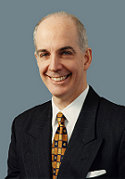 “Hair doesn’t grow singly it grows in naturally occurring groups of from one to four hairs. In follicular transplantation, we use these naturally occurring groups as the unit of the transplant,” he told CST.
“Hair doesn’t grow singly it grows in naturally occurring groups of from one to four hairs. In follicular transplantation, we use these naturally occurring groups as the unit of the transplant,” he told CST.



